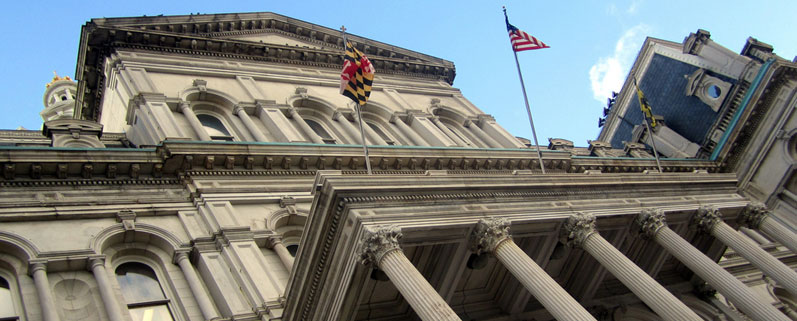Update 2/7/13 11:05 a.m.: Don’t panic yet, people. For some context, look to the Baltimore Brew, which reports that “the city’s current 2013 budget is balanced, there is $90 million available in a ‘budget stabilization reserve,’ and next year’s projected shortfall of $30.3 million is modest compared to recent budget deficits.”
Baltimore city is on track to accumulate $745 million in budget deficits over the next decade, something the city government found out for the low price of $460,000.
According to a 10-year financial forecast the city commissioned from Philadelphia-based firm Public Financial Management Inc., the budget deficits will be the result of an ever-widening chasm between revenues and city expenditures. Add to that “the city’s infrastructure needs and its liability for retiree health care benefits,” and that budget shortfall will reach $2 billion over 10 years, according to the Associated Press.
Oh, and the annual operating budget of the city, according to the AP? That’s $2.2 billion. (In December, city CIO Chris Tonjes ball-parked the number at around $5 billion.)
Let’s start with what we know:
- Over the first decade of the 21st century, Baltimore continued to lose its population. (Here’s your ever-widening chasm.) Since its peak population of 950,000 in 1950, Baltimore has since decreased in population to less than 620,000 people living within the city limits, according to Census data from 2011.
- As population goes, so does the tax base, and city residents now living in Baltimore already pay a 2.25 percent property tax, the highest in the state, if they’re homeowners. They also pay the highest local income taxes allowed by Maryland law.
- Setting sights on increasing taxes to make up for a budget shortfall probably won’t do much to attract 10,000 new families into Baltimore city over the next decade.
Let’s continue with how this might affect this city’s tech startup scene, a nascent collection of commendable efforts and several noteworthy successes, but one that, at present, grazes on the lower slopes of Startup Mountain.
A notable disconnect in Baltimore is the distance between the city’s startup scene and the general business community, which comprises what are typically called enterprise or “end-up” firms. One measure of any successful startup, however, is the manner in which it becomes a profitable business. The crux of all this? How does Baltimore city retain and attract startups, businesses — the name matters not much here — that are pulling in cash for themselves and, by extension, the city?
It’s going to require more than a website that allows people to register new businesses in a fraction of the time it usually takes. Talented people will be needed, but bringing talented people to Baltimore’s tech ecosystem is partly a function of finding a workable fix to the city’s tax predicament. It’s also partly a function of pragmatism: for example, this 24-year-old reporter is mighty bullish about using the Light Rail, the Charm City Circulator and the beauties of bipedalism to navigate Charm City, but other people are going to want to drive. Which means they need places to park their cars.
When it comes to paying those people top dollar, startups, that’s on you.
Pressing on: for how a budget shortfall might forestall efforts within the Mayor’s Office of Information Technology to bridge the city’s digital divide while making city government run more efficiently, look no further than what city CIO Chris Tonjes said at December’s TechBreakfast. Of MOIT’s $40 million budget, which represents one percent of the city’s total budget, roughly $7 million is spent on new technologies. (In Philadelphia, one such technological effort is updating the city’s tax software, which will assist the city when it comes to collecting taxes from people who haven’t been paying any taxes.)
Finally, let’s bear in mind that the public sector of this city need not be vilified. It’s an unhealthy exercise in self-righteous outrage, the energies of which are better spent discovering solutions. (Or, you know, voting.)
But a primary function of the public sector should be clever and thoughtful allocation of financial resources. You cannot do this without knowing, precisely, how much money is spent on a variety of initiatives, programs, projects and so forth. Audit city agencies, all of them, and do it more often than once every four years. It’s not a matter of principal, but rather a matter of common sense.
Join the conversation!
Find news, events, jobs and people who share your interests on Technical.ly's open community Slack

Baltimore daily roundup: An HBCU innovation champion's journey; Sen. Sanders visits Morgan State; Humane Ai review debate

Baltimore daily roundup: Medtech made in Baltimore; Sen. Sanders visits Morgan State; Humane Ai review debate

Baltimore daily roundup: The city's new esports lab; a conference in Wilmington; GBC reports $4B of economic activity

